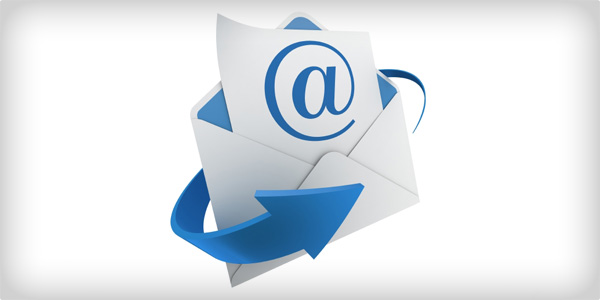What’s it all about and why is it important
If you are only reading the first sentence today, here is the key point of this article:
When buying, people make emotional decisions. They buy from you because they like you and your offer, not because you sell to them. Social selling is a way to help your audience with your expertise and make people like and trust you.
Sure, the end goal is to get clients onboard, but the focus is not on pitching and closing. Think of it in terms of a funnel. Social selling is right on the top, just like making an introduction, opening a door for someone or simply saying “Hi, I am here to help”.
Target people’s hearts over heads
You’re probably already aware that people buy because they feel like it. But how do you know how your audience feels, and if your social selling connects to their feelings.
- Specify your audience. (Know exactly who you are talking to)
- Then do some research.
You might already know your audience’s average age, the businesses they work in and what products they have purchased in the past. But emotions lie deeper…
- What’ the first thing that gets them out of bed in the morning?
- Which part of their daily routine do they feel lazy/not motivated about?
- What’s their most pressing concern when reviewing business, at the end of the month?
Read forums. Look at Facebook and Twitter. Search for places where your audience vents their personal emotions/anger/desire.
Follow Social Selling Etiquette
While social media has created a new channel for salespeople to communicate with prospects and perform research, there’s a right way and a wrong way to pursue leads on social platforms.
Social selling tells your audience who you are and gives a first impression. It’s your personal brand. Building reputation and adding value takes time and a lot of work.
However, damaging your reputation is easy. Especially if you don’t pay attention.
Do’s and Don’ts of Social Media Sales Etiquette
DO Share content you find valuable and informative
DO Use time-saving technology to post, manage and share content
DO Optimize Your Social Media Profiles
DO Join and participate in relevant LinkedIn and Facebook Groups and Forums
DO Listen and observe (Alerts)
DO Engage, comment and share regularly and consistently
DO Manage your contacts and prospecting
DO Share Content Daily and Be Consistent
BUT:
DON’T Automate, DM, or cut and paste
DON’T Expect Results Overnight
DON’T try to close sales over social media
DON’T chase sales – let the process unfold naturally
DON’T post sales materials, spec sheets, pricing, advertisements
Always keep in mind: You are here to help, not to sell.
Find and Share Relevant Content
Be sure that the content you share with your network is consistent and relevant and not “all over the map”. You want to establish your “personal brand” around specific interests and niches so that others know what to expect from you.
Create content every day and add real value. This is how you build an engaged audience who will come back for more. The quality of content you share out will position you as a thought leader in your chosen field of expertise.
When sharing the same article or content on multiple platforms – change the image and also the verbiage so that each post is created specifically for that channel. Don’t treat all social platforms the same. They’re different, and the nuances of each are important.
Three places to easily find and share content
1) Trendspottr https://trendspottr.com/trendfeed
2) Feedly.com (free)
3) Buzzsumo app.buzsumo.com ($99.00 per month)
When it comes to sharing information with individuals, be specific. Only send content that is highly relevant to a conversation. Before hitting the send button, ask yourself:
“Has this person expressed any interest, written a post or made a comment that suggests that they are interested in what I am sharing with them?”
Balance short versus long life content
There are two types of content you can use on social media:
- Short life content such as news, event announcements and product launches.
- Long life content such as expert content that analyses a niche topic, goes deep and has longer (recurring) life cycle.
The key to becoming a thought leader on social platforms is to combine type 1 and 2 effectively. Regularly engage your audience with the latest trends (type 1) and depending on the social platform, occasionally show your deeper insight in your particular niche (type 2).
Be consistent with your style
Your audience gets quickly used to the way you express yourself. To build consistent and a growing follower base, stay reliable and consistent with your writing style. Of course, how you say things will be different from Linkedin to Facebook, but keep your style consistent in both places.
How can you do this? Just write you like you talk all the time. Don’t be tempted to write long words or complicated sentences if you would not say them. You would change your style when talking to a business partner compared to how you speak with a friend. Just follow the same principle when you are writing.
This way you will have a consistent voice that matches your audience across all platforms.
Management Not Automation
Automating certain aspects of your social media updates can be helpful but there is a big difference between “managing” and “automating”.
Using a service like Hootsuite or Sprout Social to manage the timing of your posts and tweets and to manage replies and engagement can be very effective.
Automating replies and tweets (auto-tweet, DM’s) are not effective and will turn most people off. One of the fastest ways to demonstrate to your network that you are new to social media and social selling is to employ these features.
Management Platforms:
https://www.buffer.com
Optimize Your Social Profiles
What value can you really bring to them beyond the products and services, on a regular basis via social media?
First, your goal in social selling is to make sales, not find a new job. Optimize your social media profiles to reflect that. If your profile simply reflects your work history and experience it may attract job recruiters but it probably won’t attract prospects. Focus on customer value. What are the benefits of a potential prospect connecting with you (no – not a “great deal”).
Individuals with the greatest social success also tend to have the strongest personal branding in their industry and niches. Focus on building a strong reputable personal brand. Your social footprint is the new resume – regardless if you stay in your current role or with the same company – your personal brand will remain. Build and nurture it carefully.
Your personal brand and social profile is visible to potential prospects 24/7. Highlighting your expertise and knowledge by sharing industry relevant and valued posts, articles, whitepapers, etc. will raise your visibility around the clock, and in the early stages of someone’s buying cycle.
LinkedIn Optimization Guide
Follow the steps outlined in our guide below:
https://www.coxblue.com/wp-content/uploads/LinkedIn-Optimizing-Your-Professional-Profile-FV-Wide.pdf
Employ Social Listening
Use a social listening tool to frequently monitor and track discussions about the company, competitors, industry buzzwords and potential prospects. Set up Google Alerts to monitor mentions of the company name, products (including their association to any support-related words), competitors and industry trends.
Responding
Your future prospects are out in the open when it comes to social media sites like Twitter and LinkedIn. They’re discussing business concerns, asking each other questions about industry issues and news, revealing insights and information about current goings on at the companies where they work, and reaching out to peers for advice.
Listening for real-time buying signals helps you to find new prospects and also identify when potential prospects are at the most critical points of their buying journey.
Examples of early stage buying signals:
- Question about a business problem
- Questions about a competitor’s products or services
- Announcement of change in senior management
- Announcement of Geographic expansion
If someone is signaling that they’re in the early stages of the buying cycle, help them, don’t sell to them.
Provide advice, or create awareness with relevant content. By influencing their thinking now, you can position your solution against the competition and possibly create an opportunity for a deeper discussion.
Remember, as soon as the conversation shifts to specific needs, products or services, move the conversation offline. You don’t want to provide your competition with additional information and this type of conversation appears unprofessional to those not engaged in it.
Create a Routine
This is the only way social selling works. If you post, comment, engage sporadically, don’t ever expect your social selling to take off.
Check News and Conversations
The newsfeeds for each of your social accounts should be as essential to the start of your day as reading the news or having a cup coffee. It’s there that you can find out who’s changing jobs/roles, how companies on your prospecting radar are doing, and news and industry trends may affect your business.
Follow important publications, RSS feeds and top industry influencers to make sure you see news from them when it happens. If you have trouble staying on top of all this information, use a tool like LinkedIn Sales Navigator or Feedly to keep all your relevant news in one place.
Check and Respond to Social Engagements
It’s important that you monitor your social engagement on Facebook, LinkedIn, Twitter and other channels on a daily basis. Use tools like LinkedIn’s Sales Navigator and Twitter’s Analytics to find and reach out to contacts outside the first degree of your LinkedIn connections. By engaging with and growing your social networks, you can reach them when needed, stay top-of-mind and eventually cultivate referrals from them and their network.
Check LinkedIn for birthdays, anniversaries, changes in jobs or roles. Congratulate or comment. Make it personal. Never use the canned responses.
Check Groups and Forums – Participate
This is an important part of your social selling daily ritual, one that doesn’t need to take a lot of time but can yield significant results. Adding your voice to niche and industry conversations in LinkedIn and Facebooks groups, as well as forums, provides an opportunity to show your expertise and thought leadership. This can often lead to potential customers who are in the midst of their buying journey.
Many studies have shown that as much as 60-80% of business purchase decisions are made before the buyer ever reaches out to a salesperson. A quick insightful comment in a group conversation– the sharing of a relevant news story or even a valuable link–can be the turning point that causes a prospect to see you as the person who can solve their problem
Create and Curate Content
Writing, deploying and promoting blog posts and articles isn’t something you can do in 5-10 minutes, but a regular cadence of content is what will keep you top of mind with potential prospects.
Curating content is also critical. A simple link to an important industry report or survey, or sharing a company blog post can easily get your voice in front of new audiences. New audiences that may eventually become new clients or customers.
Follow and Add Quality People To Add To Your Network
If you’ve ever thought that it would be great to replace cold-calling with some other activity – this may be just the thing for you. The names you’ll scroll through while performing your daily social selling activities will always be changing.
It’s going to be your responsibility to identify people that you can start conversations with. Example, in online groups or forums, once you have some interaction with someone, reach out to with an invitation to connect. Did someone acknowledge or respond to one of your comments? Did someone in a group or forum view your LinkedIn profile? Connect.
Cultivate Existing Relationships
Social selling is not just about finding new prospects and customers, it’s also about maintaining and offering value to the relationships you already have. A simple thing such as liking a status update, or commenting on a post they wrote can go a long way. Look for simple opportunities to let others know they are still top of mind.
For your social selling strategy to be successful, it can’t be taken lightly. If you want prospects to see the value that you can provide their business, they must see a consistent pattern of value, trust and expertise from you on a regular basis.
Continuing Education
Social selling should never be considered a “one and done” learning opportunity. Like anything else, the more you learn, practice and put it to use, the better and more proficient you will become.
Social media continues to change and evolve and best practices from just 2-3 years ago are now considered outdated. Take advantage of future learning opportunities and webinars to expand your skillset in social selling. It’s value now, and in the future cannot be underestimated. Increase your knowledge, increase your sales.
What’s are the key points of this article?
– It doesn’t tell you how to sell to a prospective client the most expensive option…
– It doesn’t show you new ways to do your cold calling…
– There are no magic sales formulas in here…
– It doesn’t give you results over night…
– There are no tips here to help you close sales over social media
Ok so it doesn’t help you to sell…Or does it?
Well, if you don’t remember anything of what you have read tomorrow (or if you have skipped the article and are only reading the conclusion) here is the one point to take away:
Whatever your product, when selling you are selling yourself. Selling yourself is about helping other people. Helping your audience means genuinely caring for their concerns, researching them and finding solutions for them.
This is why social selling is at the top of any sales funnel. Use it to meet prospective clients and build relationships. Don’t try to sell. So when the time comes for your client to buy…you (and your offer) is already sold to them.
- Empowering State and Local Government Agencies with Business Class Internet and Private Networks - April 5, 2024
- Powering the Smart Hospital of Tomorrow: What You Need to Know Today - March 13, 2024
- Empowering State and Local Government IT with Business Class Internet: A Guide to Modern Infrastructure - March 7, 2024


